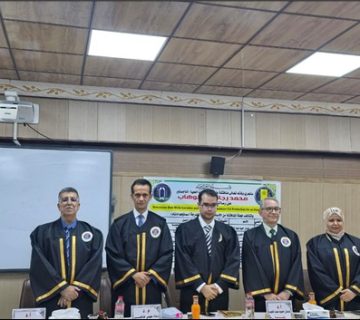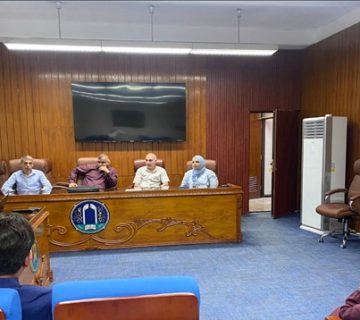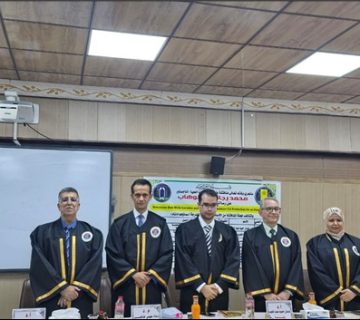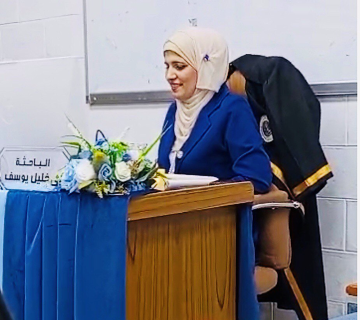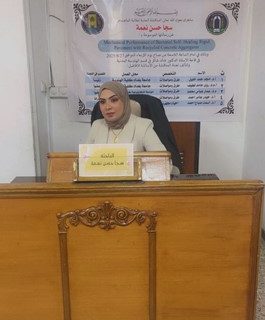The Chemical Engineering Department at the College of Engineering, University of Baghdad, held a M.Sc. thesis examination titled:
“ Removal of Cadmium Ions from Aqueous Solution Using Microbubbles Flotation
By the student Hayder Noori Abd Alhuseen and supervised by Assist. Prof Dr. Nada Naoum Abdulrazzaq. The examination committee consisted of Prof. Dr. Ahmed Faiq Al-Alway as Chairman and the membership of Asst. Prof. Dr. Atheer Mohammed Ghalib, Asst. Prof. Dr. Abbas Abdulkareem Mahmood. After conducting the public discussion and listening to the student’s defense, the thesis was accepted. The thesis was summarized as follows:
Water is the fundamental foundation for human life and all living organisms, but it is vulnerable to a wide range of organic and inorganic pollutants, such as heavy metals, which pose a significant hazard to water quality and human health. This study was carried out to verify the efficiency of microbubbles in flotation the heavy metals (cadmium ions) from aqueous solution.
This study investigates the application of microbubble air flotation for the removal of cadmium ions because of its good features, such as affordability, simple design, high efficiency, and absence of secondary contamination features, which make the use of microbubbles for removal a suitable choice.
To analyze the flotation process and assess its removal efficiency, various operating conditions were considered. These included the initial pH (3, 5, 7, 9, and 11) of the solution, the initial concentration of the pollutant (cadmium ions 10, 20, 30, and 40 mg/L), the gas (air) flow rate (0.1, 0.2, 0.3, and 0.5 Liter/ minute), the type of surfactant, and its concentration (5, 10, 15, and 20 mg/L), sampling port position (30, 60, and 90 cm), and the residence time (5, 10, 15, 20, 25, 30, and 35 min).
Experimental data showed that Sodium dodecyl sulfate surfactants are the appropriate choice to achieve a higher removal rate compared to cetyltrimethyl ammonium bromide surfactants, at concentration of 15 mg/L. Also showed that the removal efficiency of cadmium ions increased with an increasing air flow rate, the efficiency reached (97.44%) at an air flow rate of 0.5 L/min at the highest value.
The experimental results indicated that the removal of cadmium ions using microbubbles was most effective at (pH 7), at pollutant concentration of 30 mg/L, and the highest removal efficiency was observed at the port position at 30 cm from the microbubble diffuser.
Comparative experiments were conducted to assess the performance of microbubble diffusers and normal bubble diffusers. The results showed that when using the microbubble diffuser, the highest percentage of removal was achieved (97.44%), while the removal efficiency reached (52.7%), using a normal bubble diffuser, the utilization of microbubbles demonstrated an 85% increase in removal efficiency compared to a normal bubble diffuser.
Furthermore, the kinetics of microbubble removal were analyzed using a kinetic approach, and it was verified that the flotation process occurred on the order of first-order flotation for cadmium ions.




